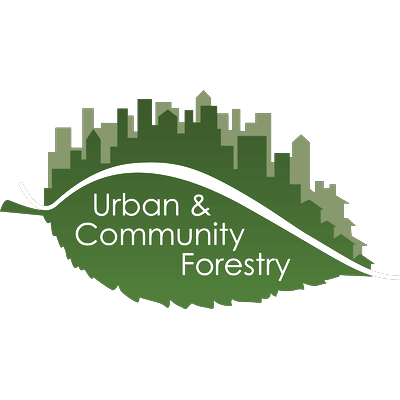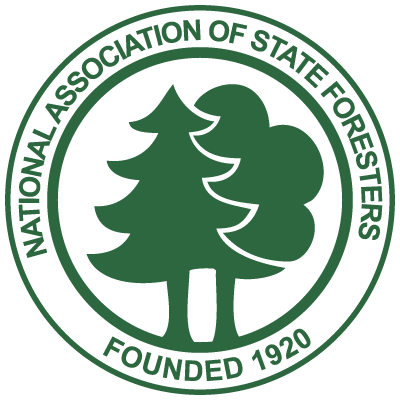Bulletin #19: How to Select & Plant a Tree
Knowing what to look for in selecting trees at the nursery will give you trees that have the best possible chance to survive and grow. And planting, done with care and some knowledge of trees and their needs, will help your trees grow more rapidly and live at least twice as long as improperly planted trees.
This is the free, digital version of Bulletin #19. Purchase the full bulletin for the complete content.
Selecting Your Tree
Trees are for a lifetime, so it pays to spend time now making sure that you get the best. Start by defining a purpose for your new tree (shade, privacy, aesthetics, windbreak, etc.). Identify the limitations of the site where you will be planting (overhead wires, confined root zone, dry climate, clay soil, etc.). Select a species to plant that is best suited for the conditions you have identified. Finally, examine the trees carefully before you buy, and buy for quality.
Bare-root Seedlings
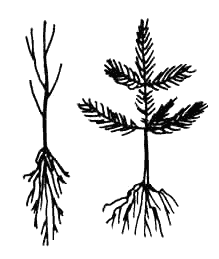
- Roots should be moist and fibrous.
- Deciduous seedlings should have roots about equal to the stem length.
Containerized
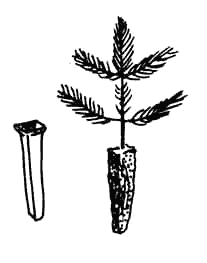
- Soil plug should be moist and firm.
- Avoid tall, spindly tops. Well-developed roots are more important.
Balled & Burlapped
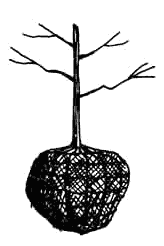
- Root ball should be firm to the touch, especially near the trunk.
- Root ball should be adequate for the tree’s size.
Potted
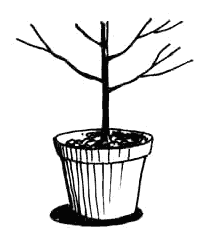
- Pot should not contain large, circling roots.
- Pruned roots cut cleanly, none wider than a finger.
- Soil and roots joined tightly.
Planting Your Tree
Bare-root Seedlings
In light or sandy soil, a planting bar or narrow shovel makes the job fast and easy. Remember to keep the roots from drying out. After creating a hole with the bar, place the seedling, insert the bar a few inches away and push to close up the soil.
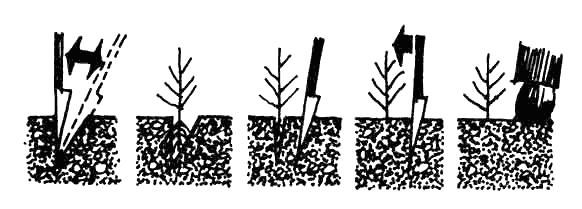
Larger Trees
Dig a hole 2 to 5 times the diameter of the root ball, and loosen the soil to help roots grow. After placing the tree, remove wires or mesh and refill the hole so the tree’s base is at ground level.
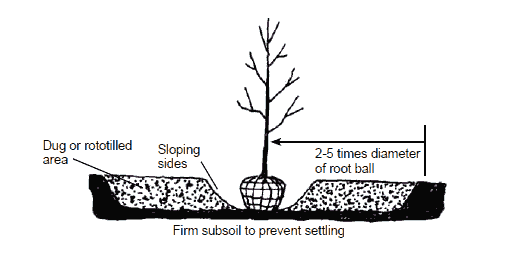
Following Up After Planting
Watering—is the key to tree survival. It should be used when filling the planting hole to eliminate large air cavities, firm the soil around fine roots, and make nourishment available to the tree. Water deeply around your tree once a week during dry spells.
Pruning—generally, it’s best not to prune after planting, except for dead or broken branches.
Fertilizing—to avoid root burn, don’t fertilize shade trees until the late spring of the second year after planting.
Mulching—mulch is a young tree’s best friend, placed 2 to 4 inches deep on the soil around the tree, but not touching the trunk.
More Information
Call 1-888-448-7337 Monday-Friday 8:00 AM to 5:00 PM CST


